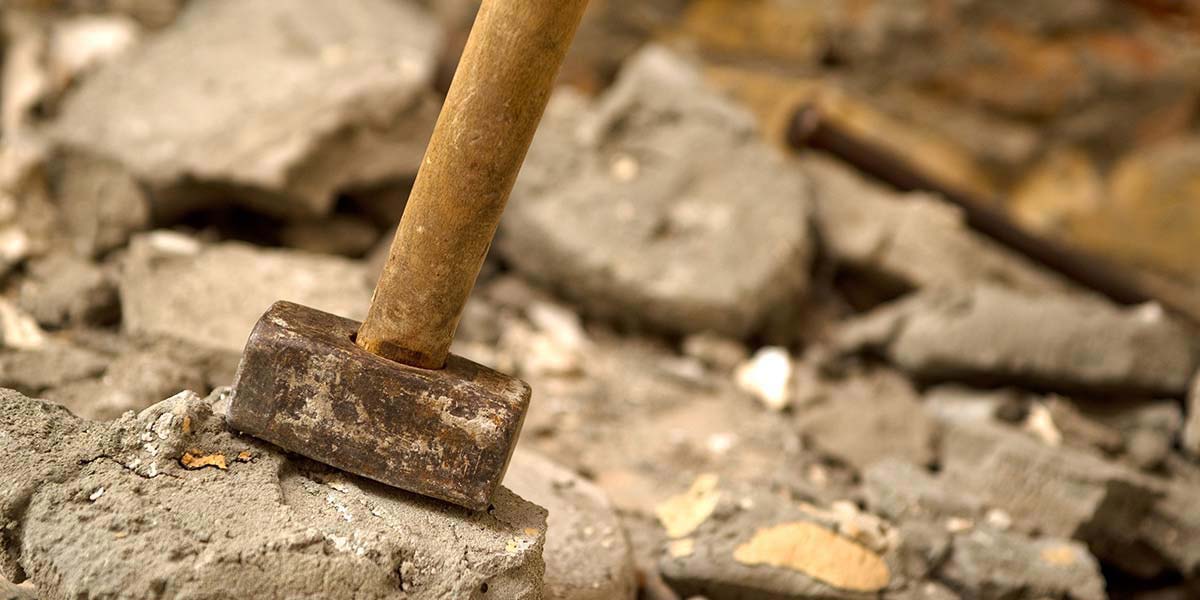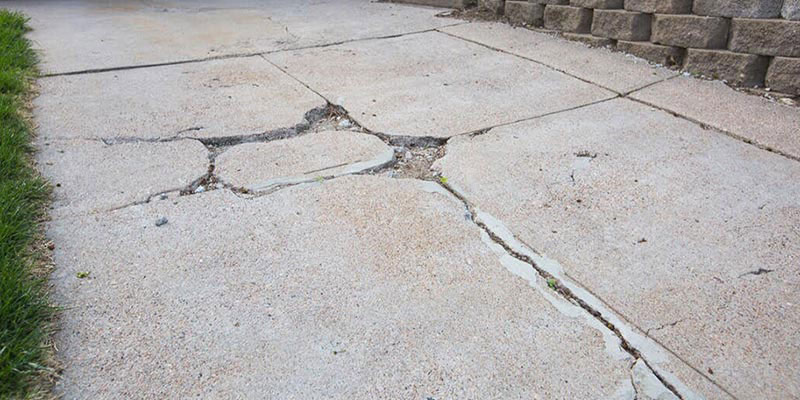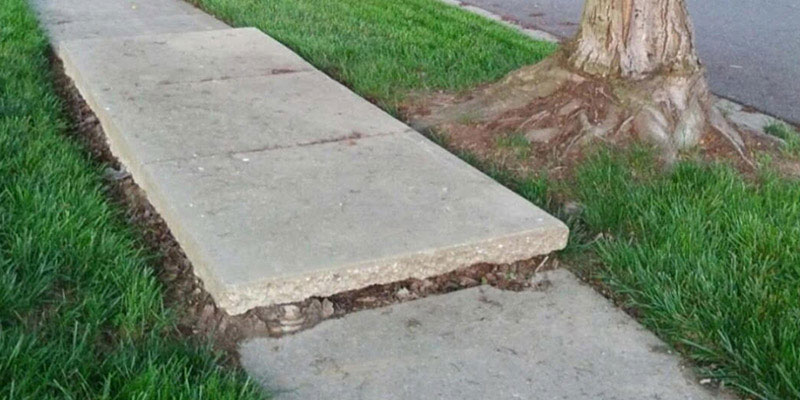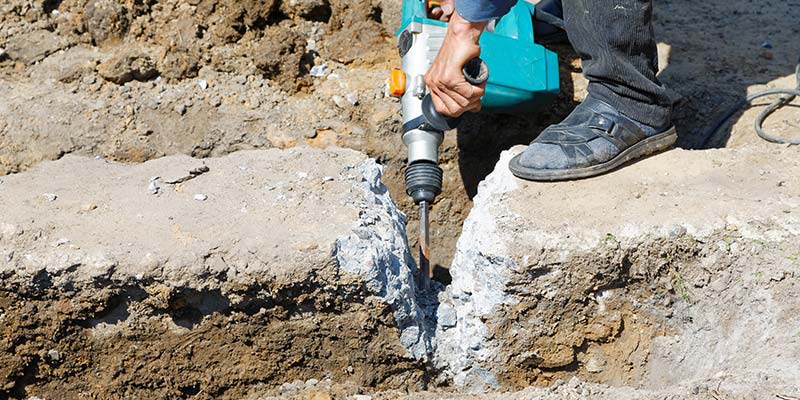
As resilient as concrete seems, it’s not immune to damage from erosion, weather and the passing of time. If you notice cracks in your walkway, patio or driveway, it’s best to address it sooner rather than later. Damaged concrete can become uneven over time, creating potential tripping hazards and unsightly rocky debris.
“Concrete has a number of telltale signs that it is time for removal. Some of these include the obvious cracking and chipping. Additional signs can include warping and uneven blocks. If the concrete has a finish on it, another sign could be the fading and discoloration of that finish.”
Adam Toporowski | Specialty Trade Account Manager, Dumpsters.com
Lighter, surface-level cracks can be mended with fresh concrete, but if the damage is deep, it’s time to tear the concrete out and make a clean slate.

There are a few important precautions to take before you get cracking with your concrete removal project.
“Safety precautions that should be taken into account are all OSHAA guidelines including safety glasses, earplugs, and heavy-duty work gloves. In addition, steel-toed boots may help to protect your feet.”
Adam Toporowski | Specialty Trade Account Manager, Dumpsters.com
Breaking up concrete costs between $1,500 and $2,500, according to the national average. However, concrete removal project expenses can vary depending on square footage, thickness of the slabs, whether or not you hire outside labor and whether or not the concrete is reinforced, among other factors.
Power tool rental is also a potential expense to consider. Rental rates for jackhammers and pneumatic breakers can vary widely depending on the local tool retail options available to you.
Removing slabs of concrete may seem like a daunting task, but the right plan and the correct tools make it a manageable process. If you’ve made the necessary preparations, concrete removal is a simple matter of gathering your tools, assessing the site, breaking the surface apart and cleaning up the fragments.
As mentioned above, your specific situation may call for different tools in order to break up the concrete on your property. These are the basic tools for most projects.
Concrete Breaking Tools and Equipment |
|
|
|

Now that you’ve assessed the project area and you have your tools assembled, it’s time to get started.
Create space underneath the slab to remove the cushion that could otherwise absorb your blows and make it more difficult to break the concrete. Use your shovel to dig underneath the slab from the side and pry the concrete off the surface underneath once you’ve started making cracks. This is called “undermining.”

Pro Tip: This is a good time to lay down the plastic sheeting over the concrete to prevent fragments from flying away from the project site.
Start by hitting the concrete with the sledgehammer near the edge of the slab. Strike different parts of the surface to create more cracks. Let gravity do as much work for you as possible.
If your project calls for a jackhammer or similar heavy-duty breaking tool, hearing protection is heavily recommended – especially in enclosed environments. Jackhammers can be equipped with various points and tips. For breaking up concrete, a chisel point is the best option.
Hold the jackhammer at a slight angle with the tip pointed away from you to minimize the risk of the point getting stuck in the concrete.
Safety Tip: Always lift the jackhammer with your legs to avoid back strain. A dust mask and goggles are also must-have safety items.
Use your pry bar or mattock to separate the broken sections of concrete. This is the best time to cut any wire mesh that’s present with your bolt cutters. Rebar reinforcement requires heavier cutting tools like a reciprocating saw or an angle grinder. Capitalize on large cracks to break sections into smaller pieces.
The safest and most efficient method of removal is to move the concrete pieces to your dumpster gradually as you work. After you’ve broken up and removed the concrete surface, it’s time to cleanup. Put away or return tools you no longer need and sweep or pick up smaller concrete fragments, using caution around former concrete slab location. If you had to shut off utilities before breaking the concrete, check with your provider to make sure it’s safe to reactivate them.
If you have holes to fill in your yard or driveway, the rubble could be used as a filling material. If the concrete cannot be used on your property, a roll off dumpster is a convenient way to get rid of heavy debris. Load fragments and chunks of broken concrete into a wheelbarrow to safely move them to the dumpster, taking care not to overload.
When you’re finished clearing the broken concrete, all you need to do is call to have your dumpster picked up. From there, you can hire a crew to pour new concrete or start planning your next outdoor project like a new stone walkway or brick patio.
Use your newfound concrete removal expertise to reimagine your outdoor spaces with some creative hardscaping.
